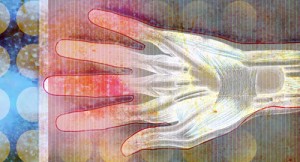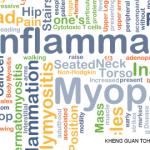 PRSYM—Idiopathic inflammatory myopathy exists in both pediatric and adult populations. Although some features of the disease are similar across age groups, other elements of pathogenesis and treatment can differ. At the virtual 2021 Pediatric Rheumatology Symposium (PRSYM), a session on updates in juvenile dermatomyositis (JDM) provided a plethora of clinical pearls and insights into what we know about this condition.
PRSYM—Idiopathic inflammatory myopathy exists in both pediatric and adult populations. Although some features of the disease are similar across age groups, other elements of pathogenesis and treatment can differ. At the virtual 2021 Pediatric Rheumatology Symposium (PRSYM), a session on updates in juvenile dermatomyositis (JDM) provided a plethora of clinical pearls and insights into what we know about this condition.
Pathogenesis
Hanna Kim, MD, MS, assistant clinical investigator, Juvenile Myositis Pathogenesis and Therapeutics Unit, National Institute of Arthritis and Musculoskeletal and Skin Diseases (NIAMS), Bethesda, Md., discussed the pathogenesis of, and treatment options for, JDM.
Environmental ultraviolet (UV) light exposure may have a role in the pathogenesis of JDM. Dr. Kim noted that exposure to higher UV light index levels is associated with greater skin involvement in juvenile myositis. In non-Black patients with JDM, the odds of developing calcinosis are increased with exposure to higher UV light index levels in the month preceding symptom onset.
When evaluating muscle pathology, it appears vascular changes, hypoxia and a prominent interferon signature may be linked to histologic changes seen on muscle biopsy. Dr. Kim is the lead author of a study that showed peripheral blood interferon-regulated gene expression in JDM overlaps with that seen in monogenic interferonopathies, such as STING-associated vasculopathy with onset in infancy (SAVI), and correlates with disease activity.5
Diagnosis
Ann Marie Reed, MD, Samuel L. Katz Distinguished Professor of Pediatrics and chair of the Department of Pediatrics, Duke University School of Medicine, Durham, N.C., centered her presentation on a young patient with JDM whom she has treated over the past several years.
When approaching any patient, particularly those with long, complicated medical histories and with care delivered at different locations, Dr. Reed said the first essential task is to verify the diagnosis. Review all past records and look for objective evidence of the disease in question, such as results from a muscle biopsy.
It’s important to know which medications were given, when they were given and what the effects of these treatments were. To paint the entire picture, laboratory studies and imaging are also essential, and it’s important to understand findings in the context of the epidemiology of the disease.
About 80% of patients with juvenile idiopathic inflammatory myopathy have dermatomyositis, Dr. Reed explained. Polymyositis is less frequently seen, with a prevalence of 4–8% and an increased prevalence in Black girls. Features of polymyositis may include severe weakness and cardiac involvement. Between 6 and 11% of patients with myositis demonstrate overlap with other connective tissue diseases, such as systemic lupus erythematosus, juvenile idiopathic arthritis or scleroderma.


